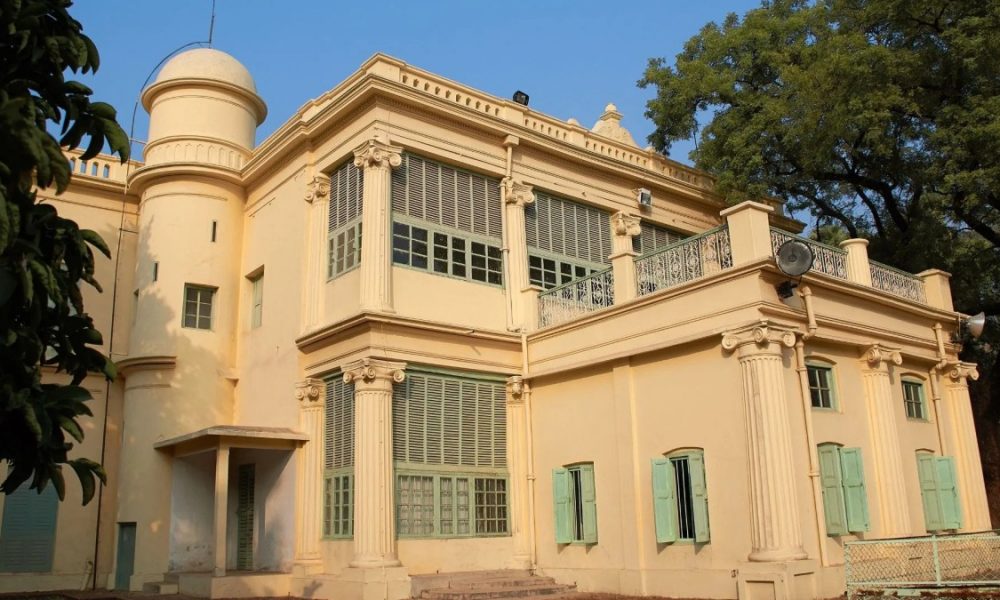
New Delhi: External Affairs Minister S Jaishankar on Sunday expressed his happiness over the conferment of UNESCO’s World Heritage status on Santiniketan, the abode of Rabindranath Tagore in the Burbhum district of West Bengal.
Santiniketan was inscribed in the UNESCO World Heritage list during the 45th Session of the World Heritage Committee in Saudi Arabia on Sunday, the UN agency informed through a post on the social media platform ‘X’.
🔴BREAKING!
New inscription on the @UNESCO #WorldHeritage List: Santiniketan, #India 🇮🇳. Congratulations! 👏👏
➡️ https://t.co/69Xvi4BtYv #45WHC pic.twitter.com/6RAVmNGXXq
— UNESCO 🏛️ #Education #Sciences #Culture 🇺🇳 (@UNESCO) September 17, 2023
Responding to the post by Vishal V Sharma, India’s ambassador and permanent representative to UNESCO, on X, Jaishankar wrote, “Congratulations. A fitting tribute to our first Nobel laureate Rabindranath Tagore and all those who have kept his message alive.”
Congratulations. A fitting tribute to our first Nobel laureate Rabindranath Tagore and all those who have kept his message alive. https://t.co/4XnfhQo5Eu
— Dr. S. Jaishankar (@DrSJaishankar) September 17, 2023
Earlier, taking to his social media ‘X’, Vishal V Sharma said it is a great day for Indians as Santiniketan had been inscribed on UNESCO’S World Heritage List.
“Santiniketan inscribed on UNESCO’s World Heritage List (Agenda 45COM.8B.10). A great day for all Indians. Bharat Mata ki jai,” he posted.
He also shared a video from the moment when Santiniketan was announced to have been inscribed on UNESCO’s World Heritage List.
#Santiniketan inscribed on UNESCO’s World Heritage List (Agenda 45COM.8B.10). A great day for all Indians. Bharat Mata ki jai. 🇮🇳 pic.twitter.com/CQeocG9BzZ
— Vishal V. Sharma 🇮🇳 (@VishalVSharma7) September 17, 2023
Prime Minister Narendra Modi on Sunday called the inclusion of West Bengal’s Santiniketan in the list of UNESCO’s World Heritage Sites as a “proud moment for all Indians”.
Taking to X, PM Modi posted, “Delighted that Santiniketan, an embodiment of Gurudev Rabindranath Tagore’s vision and India’s rich cultural heritage, has been inscribed on the @UNESCO World Heritage List. This is a proud moment for all Indians.”
একথা জেনে আনন্দিত হলাম যে, গুরুদেব রবীন্দ্রনাথ ঠাকুরের স্বপ্ন ও ভারতের সমৃদ্ধ সাংস্কৃতিক ঐতিহ্যের মূর্ত রূপ শান্তিনিকেতন উৎকীর্ণ হয়েছে @UNESCO বিশ্ব পরম্পরা তালিকায়। সব ভারতীয়ের কাছেই এ এক গর্বের মুহূর্ত। https://t.co/Um0UUACsnk
— Narendra Modi (@narendramodi) September 17, 2023
Established in 1901 by Tagore, Santiniketan was a residential school and centre for art based on ancient Indian traditions and a vision of the unity of humanity transcending religious and cultural boundaries.
A ‘world university’ was established at Santiniketan in 1921, recognising the unity of humanity or “Visva Bharati”.
Distinct from the prevailing British colonial architectural orientations of the early 20th century and of European modernism, Santiniketan represents approaches toward pan-Asian modernity, drawing on ancient, medieval and folk traditions from across the region.
India had been striving for a long to get a UNESCO tag for this cultural site located in the Birbhum district.
Union Minister for Culture and Tourism, G Kishan Reddy, on Tuesday informed that Shantiniketan had been recommended for inclusion in the UNESCO World Heritage list by The International Council on Monuments and Sites (ICOMOS).




